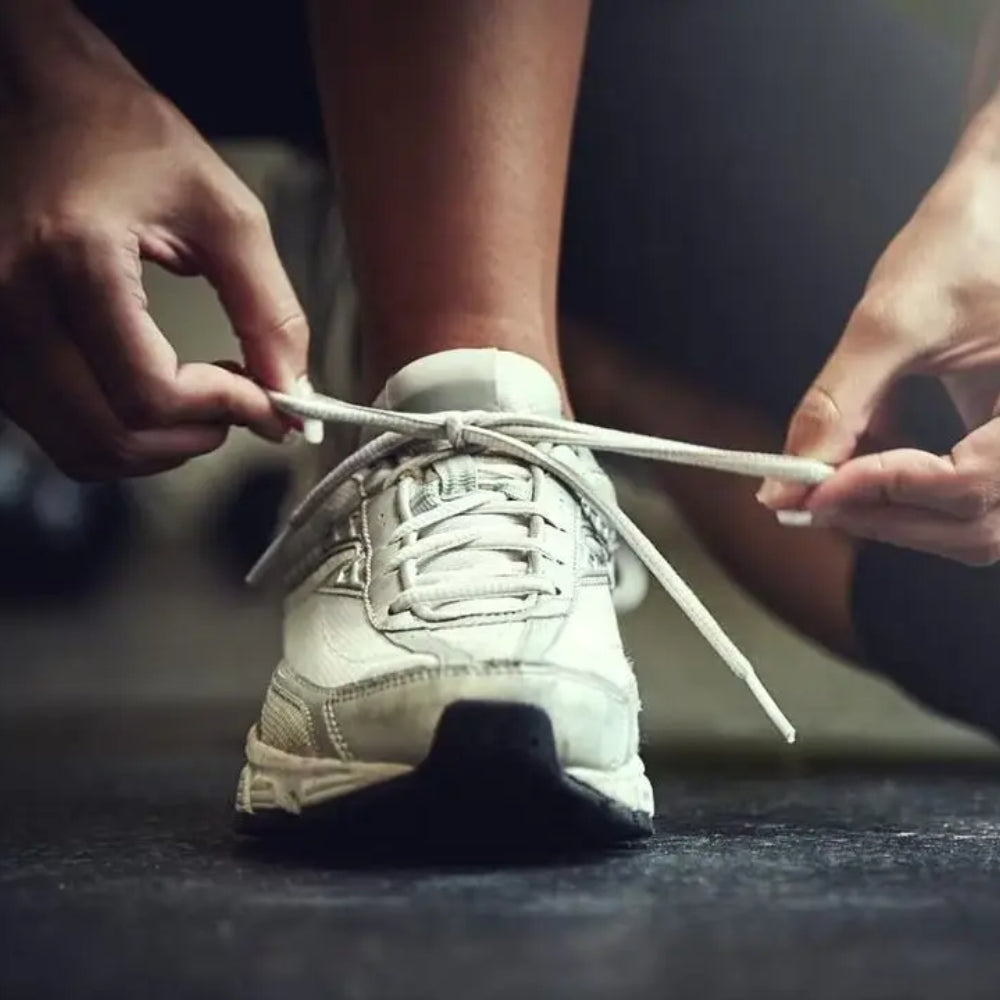Tying shoelaces may seem simple, but it plays an important role in ensuring comfort and safety when moving. A properly tied shoelace not only helps to secure the shoe firmly but also shows the sophistication and aesthetic taste of the wearer. This article on Shondo Blog will guide you on how to tie a simple and beautiful shoelace , from basic to advanced tying styles, helping you confidently walk with your favorite shoes.
1. The hottest shoe bow tying styles
There are many different styles of shoe bows, each with its own unique beauty and strength. Here are some of the most popular shoe bow styles today:
1.1. Traditional bow tie (X-style)
The traditional bow tie, also known as the criss-cross (X) style, is the most basic and common style. Most people learn to tie this style when they are young. It is easy to learn, easy to do, and works with almost any type of shoe, from sneakers to canvas to leather.
How to tie:
- Cross the two shoelaces to form an X shape. Make sure the two laces are equal in length.
- Thread one shoelace (right or left, your choice) through the gap below the X knot and pull tight. You should now have a basic knot.
- Make two loops from the ends of the shoelaces. The loops should be a moderate size, not too big and not too small.
- Cross two circles similar to step 1, forming a smaller X shape.
- Thread one loop (right or left loop optional) through the opening below the small X knot and pull tight.
- Adjust the two circles to make them balanced and beautiful.
Advantages: Simple, easy to learn, easy to do, suitable for all types of shoes.
Disadvantage: Shoe bows can come loose if not tightened or during vigorous exercise.
Suitable for: Everyone, especially children who are just starting to learn how to tie their shoes. This lacing style is also suitable for those who want a quick, simple lacing style for everyday activities.
[caption id="attachment_6846" align="aligncenter" width="800"]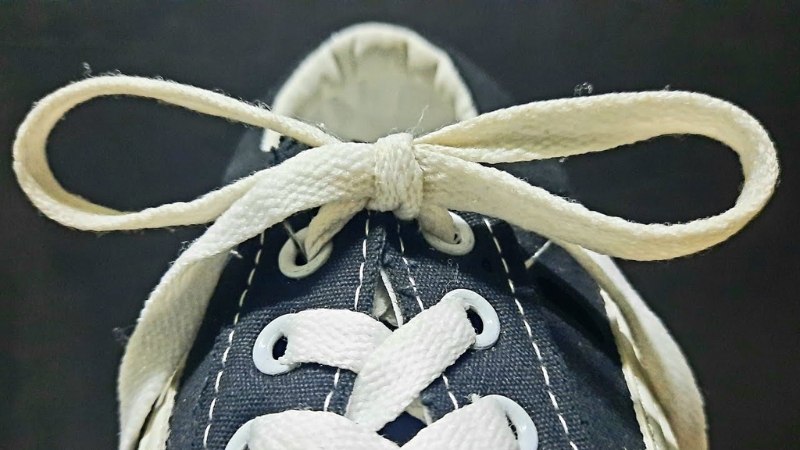 The traditional bow tie is the most popular style today[/caption]
The traditional bow tie is the most popular style today[/caption]
1.2. Lan Knot style
The Ian Knot is named after its inventor, Ian Fieggen. This is a knot that is considered faster and more secure than the traditional knot, saving time and ensuring more safety when moving.
How to tie:
- Cross the two shoelaces to form an X shape like the traditional lacing style.
- Hold the shoelaces with the thumb and index finger of each hand. Place your thumb and index finger so that they form a small circle around the shoelaces.
- At the same time, thread the two shoelaces into the gap below the X knot in opposite directions. This is the most important step of this lacing style.
- Pull the two laces tight to complete the bow. The bow will be formed quickly.
Advantages: Fast, sturdy, less likely to slip, saves time.
Cons: It takes a little time to get used to tying. At first, you may have difficulty coordinating your hands and threading the laces.
Suitable for: People who want to tie their shoelaces quickly and securely, especially athletes, runners or people who are constantly on the move.
[caption id="attachment_6847" align="aligncenter" width="800"]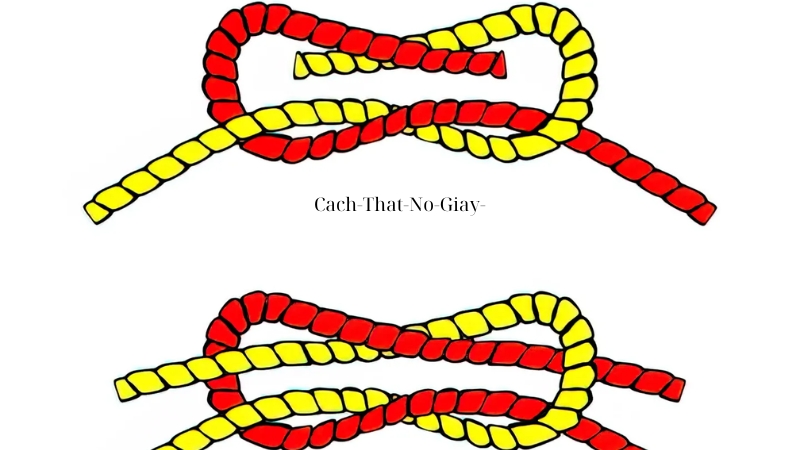 The Ian Knot is a more secure style than the traditional one[/caption]
The Ian Knot is a more secure style than the traditional one[/caption]
1.3. Bar Lace Bow Tie Style
The Bar Lace knot, also known as the straight knot, is known for its strength and high resistance to slipping. This knot is often used in the military or in sports activities that require vigorous movement.
How to tie:
- Thread the shoelaces straight through the eyelets. Unlike the traditional and Ian Knots, this style does not start with a criss-cross knot.
- Make a loop at one end of the shoelace. This loop will be the anchor point of the shoe bow.
- Wrap the remaining end around the loop several times. The number of wraps will depend on the length of the lace and the desired strength.
- Thread the end of the string through the opening below the circle, creating a small knot.
- Pull tight to complete the bow. The bow will be straight, different from the two styles above.
Advantages: Sturdy, anti-slip, suitable for sports and strenuous activities.
Disadvantages: Quite complicated, takes more time to perform than the two above tying styles.
Suitable for: Athletes, climbers, military personnel, or those who are active and need a secure, non-slip shoe lace.
[caption id="attachment_6848" align="aligncenter" width="800"]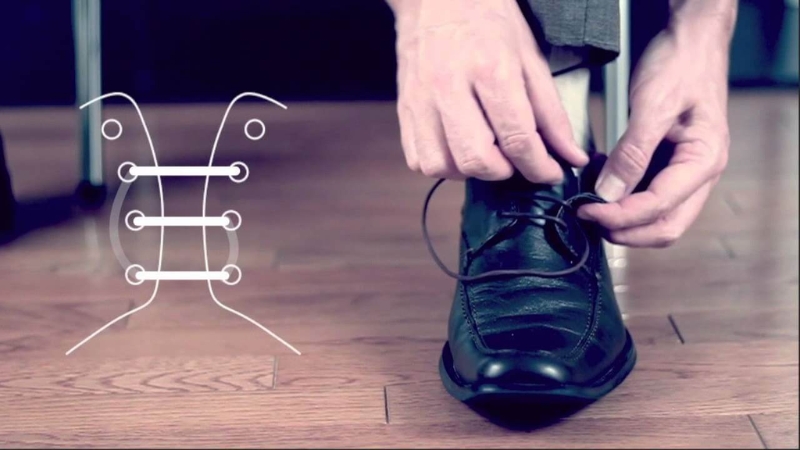 Bar Lace bow tie has high slip resistance[/caption]
Bar Lace bow tie has high slip resistance[/caption]
2. How to tie shoe bows quickly and easily
- Choose the right shoelaces: The length of the shoelaces affects the strength of the bow. Shoelaces that are too long are prone to slipping, while shoelaces that are too short are difficult to tie a bow.
- Tighten the laces: Tighten the laces at the top of the shoe before tying the bow. This will help secure the shoe and reduce the risk of the bow coming undone.
- Tie the Knot Correctly: Make sure you follow the steps for the bow tie style you choose. A loose knot will easily come untied.
- Check shoe laces regularly: Shoe laces can loosen as you move. Check and tighten them as needed.
- Use good quality shoelaces: Good quality shoelaces will last longer and be less likely to come undone than poor quality shoelaces.
- Choose the right lacing style: Depending on the activity and type of shoe, you should choose the right lacing style. For example, the Bar Lace style is suitable for sports activities, while the traditional lacing style is suitable for everyday activities.
 Tighten the shoelaces to make the shoes more secure[/caption]
>>>See more: How to tie horizontal shoelaces simply, beautifully and securely.
Tighten the shoelaces to make the shoes more secure[/caption]
>>>See more: How to tie horizontal shoelaces simply, beautifully and securely.
3. Frequently asked questions when tying shoe bows
3.1. Why do shoe laces come untied easily?
There are many reasons why shoe laces can come untied, including:
- Shoelaces that are too long: Shoelaces that are too long create a lot of friction with the ground and are prone to getting caught on obstacles, causing the bow to come untied.
- Poor quality shoelaces: Poor quality shoelaces are often slippery and come undone easily.
- Wrong bow tie style: Some bow ties are not sturdy enough and can easily come loose during movement.
- Incorrect way to tie a bow: If you don't tie a bow properly, the bow will easily loosen and fall off.
- Ill-fitting shoes: Shoes that are too loose or too tight can also cause the shoelaces to come undone.
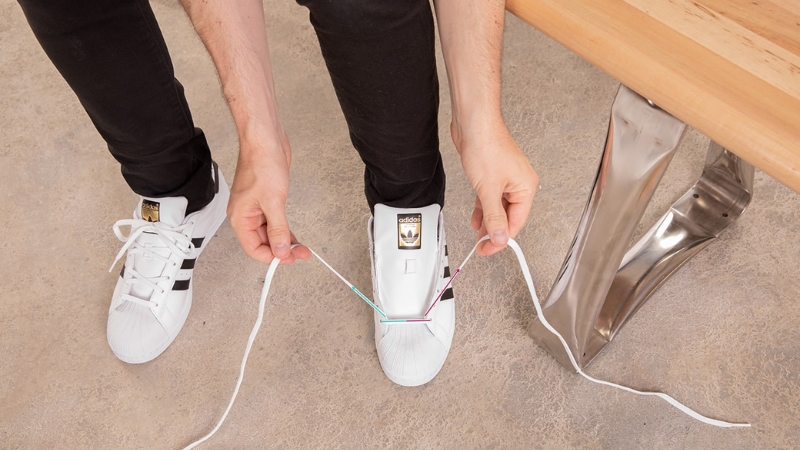 Shoe bows can easily come loose for many different reasons[/caption]
Shoe bows can easily come loose for many different reasons[/caption]
3.2. What type of bow tie is suitable for children?
For children who are just starting to learn how to tie their shoelaces, the traditional bow (X-style) is the best choice because it is simple and easy to learn. Once your child has mastered it, you can teach them more complex styles such as the Ian Knot or Bar Lace. The most important thing is to make sure your child ties the bow securely to ensure safety when moving.
Tying shoe bows is a simple but essential skill in life. By mastering the basic shoe bow tying styles and applying effective shoe lacing tips, you can move comfortably and express your own personality.
Hopefully this Shondo Blog article has provided you with useful information on how to tie a simple and beautiful shoe bow . Try experimenting and find the shoe bow style that best suits you.
Related Articles

Nếu bạn đã và đang sở hữu cho mình đôi giày ballet sneaker nhưng vẫn chưa biết outfit nào phù hợp. Xem ngay bài viết này với 5 cách phối đồ với giày ballet sneaker đẹp không có điểm trừ cùng Shondo...

Squid Game 3 chính thức khuấy đảo trên màn ảnh, bạn đã sẵn sàng ngồi liền 6 tập để xem cuộc chiến sinh tồn lần cuối của Gi-Hun chưa? Dưới đây là combo cuối tuần “chuẩn sinh tồn hiện đại” mà Shondo ...

Phong cách Retro là gì mà được nhiều người săn đón như vậy? Cùng Shondo tìm hiểu qua bài viết sau đây để biết thêm nhiều điều thú vị từ điểm đặc trưng cho đến cách phối đồ như thế nào là chuẩn nhé....

Một trong những trào lưu nổi bật gây sốt trên các cộng đồng yêu thời trang chính là phong cách Maillard. Nhưng điều gì khiến chúng lại có sức hút lớn đến như vậy? Shondo sẽ giúp bạn hiểu rõ hơn về...

Áo Polo nữ - item nghe thì tưởng già nhưng thực ra lại đang quay trở lại mạnh mẽ. Từ sân golf đến sân trường, từ văn phòng đến quán cafe, chiếc áo đơn giản với cổ bẻ đặc trưng này bỗng trở nên đa n...
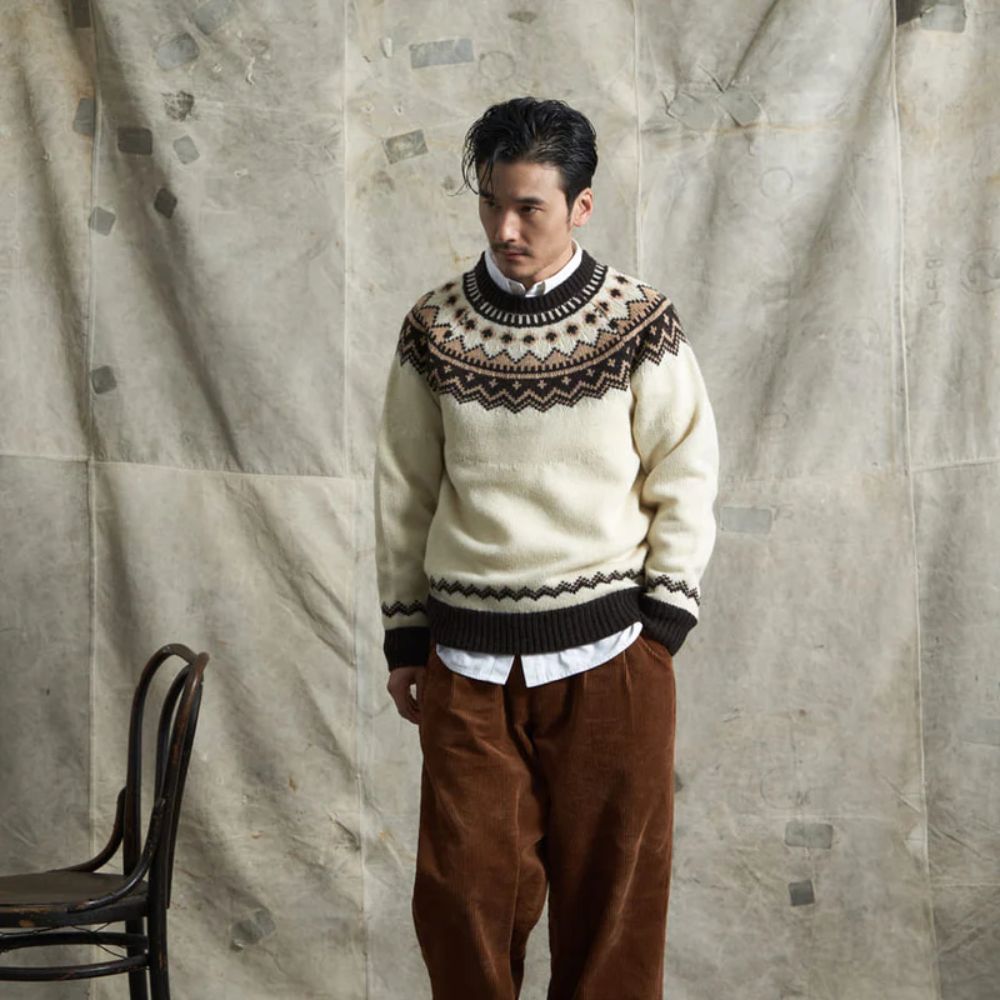
Phối đồ Vintage trong giới thời trang mang đến những nét độc đáo rất riêng. Phong cách này trở thành xu hướng phổ biến không chỉ ở nữ mà còn xuất hiện nhiều ở nam giới. Shondo sẽ cho bạn thấy điều ...

